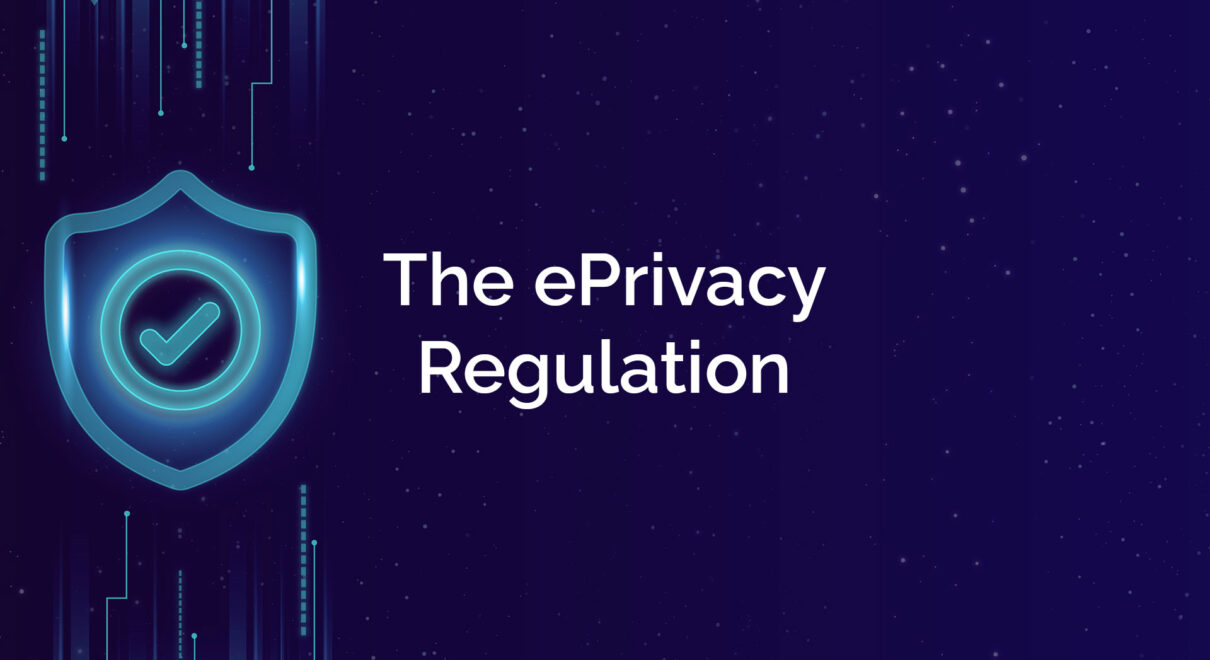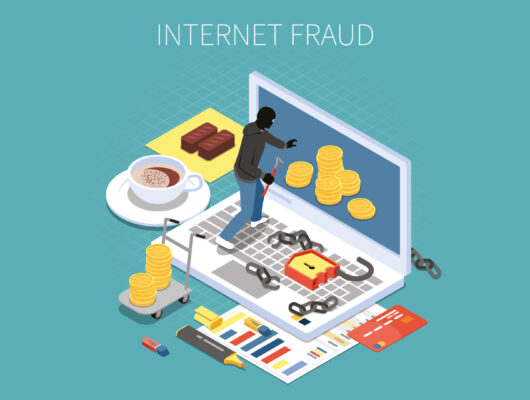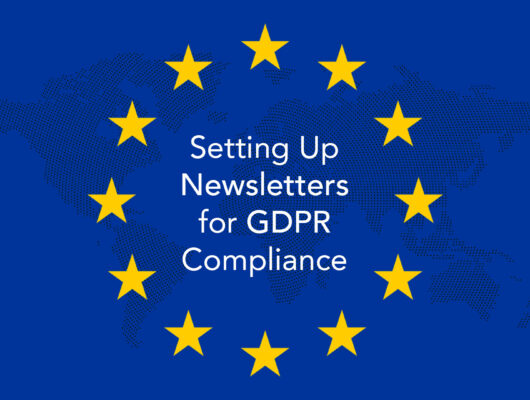The ePrivacy Regulation, commonly referred to as the “ePrivacy Directive” or the “Cookie Law,” is a law of the European Union that governs the use of electronic communications services and the security of personal data in that industry. All businesses storing personal data, such as businesses websites, mobile applications, and other digital services, must comply with this regulation.
What does the ePrivacy Regulation Regulate?
The regulation covers a wide range of topics, including the use of cookies and similar technologies, direct marketing, and the confidentiality and security of electronic communications. It also strengthens the rights of individuals in relation to their personal data and how it is used by companies.
The ePrivacy Regulation is designed to complement and supplement the EU’s General Data Protection Regulation (GDPR), which regulates the processing of personal data more generally.
What is the Difference Between GDPR and ePrivacy?
The General Data Protection Regulation (GDPR) and the ePrivacy Regulation (ePR) are both European Union regulations that deal with personal data protection, but they have different scopes and focus on different aspects of data protection.
The GDPR regulates the processing of personal data in general and applies to any organization that processes personal data, regardless of whether or not it is involved in electronic communications. It sets out principles and rights for individuals in relation to their personal data and the responsibilities of organizations that process personal data.
The ePrivacy Regulation, has specific rules concerning the usage of digital services and the protection of personal data in that industry. It covers a range of topics, such as direct marketing, the use of cookies and similar technologies, and the privacy and security of electronic communications.
In conclusion, ePrivacy is a more particular regulation that focuses on the protection of personal data in the electronic communications industry, whereas GDPR is a more general rule that applies to any organisation that processes personal data. Both rules are intended to augment and support one another.
Key Elements of the ePrivacy Regulation
ePrivacy Regulation contains several key elements that organizations must comply with in order to protect personal data and respect the privacy of individuals. Some of the key elements of the ePrivacy Regulation include:
Consent for cookies and similar technologies: The ePR requires organizations to obtain consent from individuals before placing cookies or similar technologies on their devices. This consent must be freely given, specific, and informed.
Direct marketing: The ePR regulates the use of electronic communications for direct marketing purposes. Organizations must obtain consent from individuals before sending them marketing communications, and individuals have the right to opt-out of receiving such communications.
Confidentiality of communications: The ePR ensures that electronic communications are confidential and that organizations are not allowed to listen, tap, or store communication without a legal reason.
Security of electronic communications: The ePR requires organizations to take appropriate technical and organizational measures to protect the security of electronic communications and to notify individuals and authorities in case of a personal data breach.
Privacy by design: The ePR promotes the principle of privacy by design, which means that privacy must be built into the design of electronic communications services and technologies from the outset.
Transparency and information for individuals: The ePR requires organizations to provide clear and comprehensive information to individuals about their rights and how their personal data is processed.
Enforcement and penalties: The ePR provides for effective enforcement of its provisions and sets out penalties for non-compliance, including fines of up to €20 million or 4% of the total worldwide annual revenue of the preceding financial year, whichever is higher.
What is the Status of the ePrivacy Regulation?
As of my knowledge cutoff in 2021, the ePrivacy Regulation (ePR) has not yet been fully implemented. The ePR was proposed by the European Commission in January 2017, and a draft version of the regulation was published in January 2018. However, since then, the regulation has been delayed several times, and the final version of the regulation has not yet been adopted.
The European Parliament and the Council of the European Union have not yet agreed on the final version of the rule, which would have made the ePR effective concurrently with the General Data Protection Regulation (GDPR) in May 2018.
The meaning of “permission” for the use of cookies and related technologies, as well as the limitations of the law, are the key points of conflict. Although several Member States and business organisations have asked for a more flexible approach, the draught version of the ePR mandates that enterprises acquire express consent for cookies. There are debates about the regulation’s scope as well. Some stakeholders contend that it should only apply to traditional electronic communications providers, like telecom companies, while others contend that it should apply to all businesses that process personal data in the context of electronic communications.
Due to the delay in its implementation, the status of ePrivacy Regulation is uncertain and it is not yet clear when it will be adopted. Some EU member countries have introduced their own regulations to fill the gap.
What is the EU ePrivacy Directive?
The EU ePrivacy Directive (also known as Directive 2002/58/EC) is a European Union directive that regulates the processing of personal data in the electronic communications sector. It was adopted in 2002 and applies to all organizations that provide publicly available electronic communications services in the EU. The directive focuses on the confidentiality of electronic communications, including the use of cookies and similar technologies, and the protection of personal data in the electronic communications sector.
For the use of cookies and related technologies, it lays out particular guidelines. Except for cookies that are strictly necessary for the operation of the service, it mandates that businesses notify people about the use of cookies and acquire their consent before putting them on their devices.
The EU ePrivacy Directive also regulates the use of electronic communications for direct marketing purposes. It requires organizations to obtain consent from individuals before sending them marketing communications, and individuals have the right to opt-out of receiving such communications.
The EU ePrivacy Directive further mandates that organisations take the proper operational and technical precautions to protect the security of electronic communications and to notify individuals and authorities in the case of a personal data breach.
In summary, the EU ePrivacy Directive is a specific regulation that focuses on the protection of personal data in the electronic communications sector, including the use of cookies, direct marketing and confidentiality of electronic communications.
ePrivacy Core Functions for Websites
The EU ePrivacy Directive has several core functions that websites and other electronic communications providers must comply with in order to protect personal data and respect the privacy of individuals. Some of the core functions for websites include:
Cookie consent: Websites must obtain consent from individuals before placing cookies or similar technologies on their devices. This consent must be freely given, specific, and informed.
Privacy policy: Websites must provide a clear and comprehensive privacy policy that informs individuals about how their personal data is collected, used, and protected.
Direct marketing: Websites must obtain consent from individuals before sending them marketing communications, and individuals have the right to opt-out of receiving such communications.
Security of electronic communications: Websites must take appropriate technical and organizational measures to protect the security of electronic communications and to notify individuals and authorities in case of a personal data breach.
Privacy by design: Websites must implement privacy by design principles, which means that privacy must be built into the design of the website and its features from the outset.
Transparency and information for individuals: Websites must provide clear and comprehensive information to individuals about their rights and how their personal data is processed.
Data minimization: Websites must ensure that they only collect the personal data that is necessary for the specific purpose and retain it only as long as it is needed
Deletion of data: Websites must ensure that they delete personal data when it is no longer needed, and that they have a clear process in place for data deletion.
It’s important to note that although the ePrivacy Directive (2002/58/EC) has been replaced by the ePrivacy Regulation (2019/679) the core functions for websites remain the same, but with some updates and enhancements on its provisions.
Does the ePrivacy Directive (EU cookie law) Apply to My Company?
If your company operates a website or other electronic communications service that is accessible to individuals in the EU, then the ePrivacy Directive applies to your company. This includes companies based outside of the EU if they target EU citizens.
The ePrivacy Directive applies to all types of cookies and similar technologies, including session cookies, persistent cookies, and third-party cookies. It requires organizations to inform individuals about the use of cookies and to obtain their consent before placing them on their devices, except for cookies that are strictly necessary for the operation of the service.
In conclusion, if your company operates a website or other electronic communications service that is accessible to individuals in the EU, the EU ePrivacy Directive applies to your company and you must comply with its provisions regarding the use of cookies and similar technologies.
How Do I Make My Website Compliant with the ePrivacy Directive?
You must put in place a variety of security measures to safeguard personal data and uphold people’s privacy in order for your website to comply with the EU ePrivacy Directive (2002/58/EC). You can follow these procedures to make your website compliant:
Provide clear and comprehensive information about cookies: You must inform individuals about the use of cookies and similar technologies on your website, including what type of cookies are used, how they are used, and for what purpose. This information should be provided in a clear and comprehensive privacy policy.
Obtain consent for cookies: You must obtain consent from individuals before placing cookies or similar technologies on their devices. This consent must be freely given, specific, and informed. You can use cookie consent banners or similar mechanisms to obtain consent.
Provide an easy way for users to manage and delete cookies: You should provide a way for users to manage and delete cookies on your website. This could include an option in the privacy policy or a separate cookie management tool.
Implement security measures: You must take appropriate technical and organizational measures to protect the security of electronic communications and to notify individuals and authorities in case of a personal data breach.
Apply privacy by design principles: You must implement privacy by design principles, which means that privacy must be built into the design of the website and its features from the outset.
Provide clear and comprehensive information to individuals: You must provide clear and comprehensive information to individuals about their rights.
ePrivacy Directive Compliance
Trying to comprehend privacy regulations? You must balance cookie usage on your website with adherence to EU cookie law. We can assist you. Please feel free to write us.








